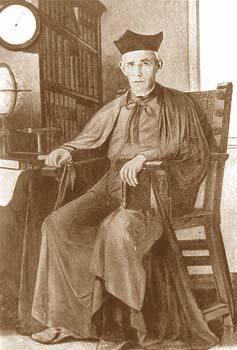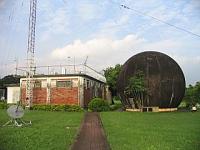Posts Tagged ‘Course Syllabus’
Course Syllabus Ps 11.1: General Physics for Life Sciences
COURSE SYLLABUS
Course Number: PS 11.1 B
Title: General Physics for Life Sciences, Laboratory
Department/Program: Physics
School: SOSE
Semester and School Year: 1st Semester, SY 2011-2012
Instructor: Dr. Quirino Sugon Jr.
Schedule: F 0830-1030
Room: SEC C-106A
I. Course Description
Ps 11.1 is laboratory physics course for students in the life sciences. Topics covered are mechanics and heat.
Prerequisites: None
II. Textbook
Hugh D. Young and Roger A. Freedman, University Physics with Modern Physics, 11th ed. (Addison Wesley, Singapore, 2004).
III. Grading System
The student’s final grade G is computed as follows:
G = 0.2P + 0.3E + 0.5R,
where P is the performance grade, E is the exam grade, and R is the laboratory report grade. Below is the percentile equivalents of the letter grades:
A = 92 – 100
B+ = 86 – 91
B = 77 – 85
C+ = 69 – 76
C = 60 – 68
D = 50 – 59
F = 0 – 49
A. Performance
Performance P is measured by your attendance and lates. If there are N laboratory experiments and the student only performed n experiments, then the student’s performance grade is
P = (n/N) x 100.
If the student is late in the class, his performance grade for that laboratory experiment is equal to 100 minus each minute that he is late. On the other hand, if the teacher is late in coming to class, all students get a 1 pt bonus in the lab performance for that experiment for each minute that the teacher is late.
B. Laboratory Exam
Every 4 to 5 weeks, instead of a laboratory session, there will be a laboratory exam covering the four previous laboratory experiments. The students wil be asked regarding their laboratory report: abstract, problem, theoretical framework, procedure, results, and conclusion. Each laboratory exam is worth 100 pts.
C. Laboratory Report
Each laboratory report should follow the format of IEEE conference paper template:
http://www.ieee.org/conferences_events/conferences/publishing/templates.html
How to write the laboratory report will be taught in class. Here are some general rules:
- Title should not exceed 13 words
- Abstract should not exceed 5 sentences. The abstract should contain the problem, method, results, conclusion.
- The Introduction should not exceed 3 paragraphs. The first and second paragraphs describes the key concepts in the title and their applications to life science. The third paragraph describe the problem and the method in one or two sentences
- The theoretical framework should discuss the pertinent equations that will be verified in the experiment. If needed, the report must show how the final working equation is derived from first principles. If this derivation is provided in a book or journal, the result may be immediately stated with the accompanying citation of the reference. The variables in the equations should be properly named. As a rule of thumb, the final working equation should have its dependent variable at the left side and the measurable parameters on the right side. The theoretical framework should also have a diagram relating the variables in the working equation.
- The methodology has two parts: materials and procedure. In the materials section, discuss the brand/model of your special equipments and their precision. In the procedure section, describe how you shall measure the measurable parameters on the right side of your working equation. If this procedure requires some statistical methods of analysis, describe these methods. If the methods are well known, cite the reference. The procedure should contain the figure for the experimental setup. This figure illustrates the materials and how they are connected to each other.
- In the Results and Discussion, if the data is better presented as a table, present is as a table; if figure, present it as a figure. Only make sure that you do not present the same data in both tabular and figure form.
- The Conclusion is essentially your Abstract in hindsight. An Abstract is a promise to tell your story. The Conclusion is a statement that you have fulfilled your promise. As a rule, the Conclusion has three logical parts, which may not be in three separate paragraphs: summary, conclusion proper, and recommendation.
IV. List of Experiments
- Position, velocity, and acceleration
- Vector addition and balance of forces
- Rotational motion and the water pail
- Hooke’s law and vibrations
- Measurement of gravitational acceleration using a pendulum
- Conservation of momentum: collisions
- Rolling sphere and moment of inertia
- Platform balance and balance of torques
- Torque and angular momentum: spinning bicycle wheel
- Strength of materials: stress and strain
- Linear expansion
- Heat capacity of metals
- Calorimetry and phase changes
- Newton’s law of cooling and heating
V. Dress Code
Ateneo de Manila University is a Catholic university. So the dress rule in class follows the Catholic dress code: Be modest. Modesty is the guardian of chastity. Honeymoon after marriage is most exciting when you have more parts of your body to uncover. So dress for the future, so that you can say to your future husband or wife, “All these years I have kept these hidden for you to uncover, because I love you.” As a rule, students must enter the class following the dress code in the school library. Those who disobey the dress code will be sent out of class and marked absent.
AMDG


